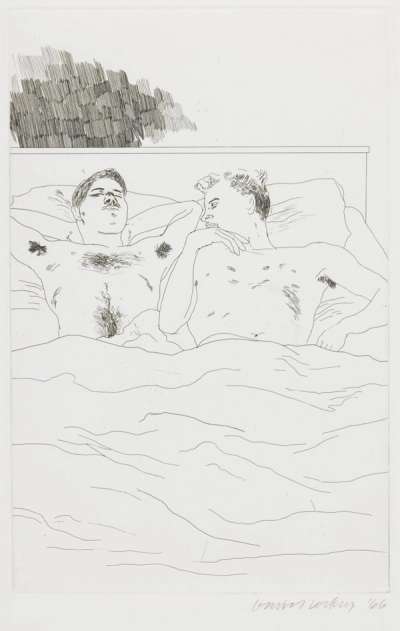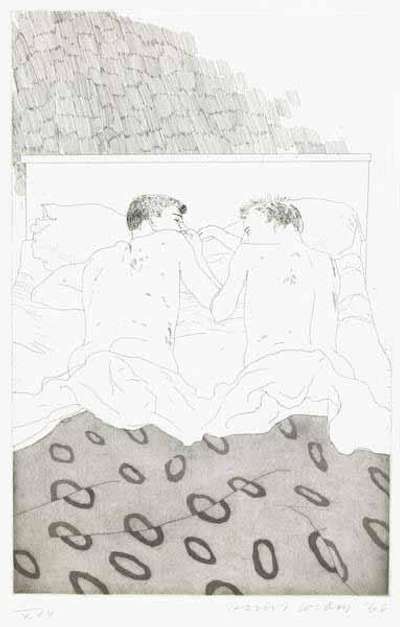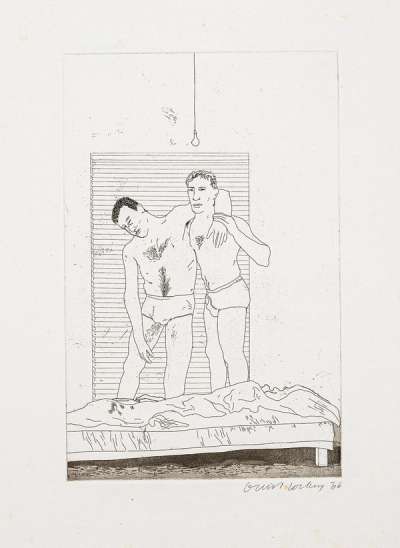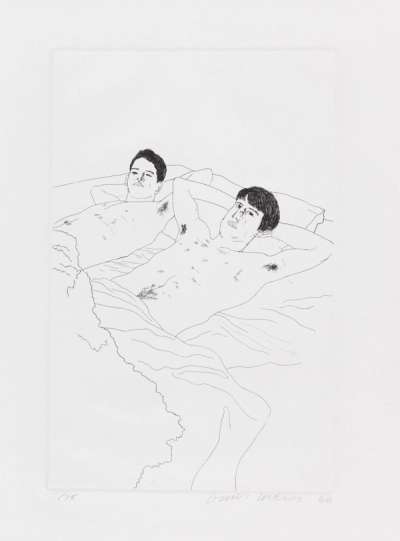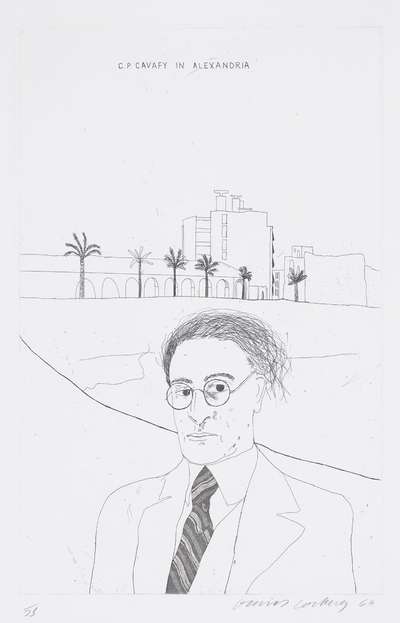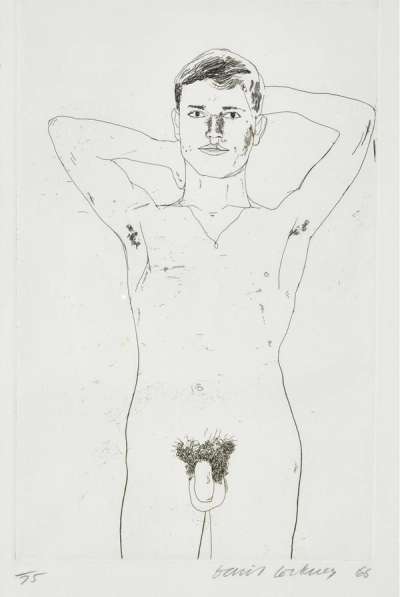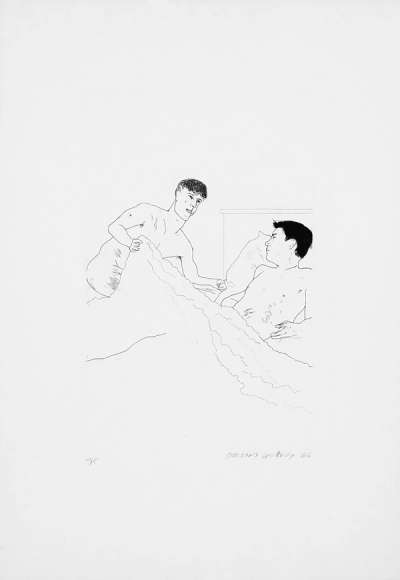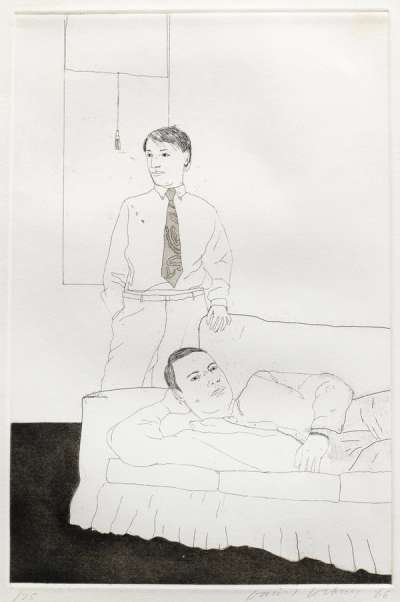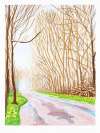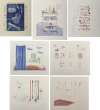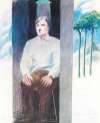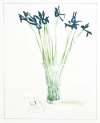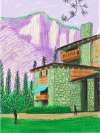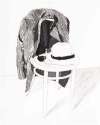Illustrations
For Fourteen Poems By C.P. Cavafy
David Hockney has always considered himself to be something of a literary painter. With his series Illustrations For Fourteen Poems By C.P. Cavafy Hockney chooses to focus on a homosexual poet whose work he admired from a young age.
David Hockney Illustrations For Fourteen Poems By C.P. Cavafy For sale
Illustrations For Fourteen Poems By C.P. Cavafy Value (5 Years)
With £45417 in the past 12 months, David Hockney's Illustrations For Fourteen Poems By C.P. Cavafy series is one of the most actively traded in the market. Prices have varied significantly – from £451 to £9500 – driven by fluctuations in factors like condition, provenance, and market timing. Over the past 12 months, the average selling price was £4128, with an average annual growth rate of 7.79% across the series.
Illustrations For Fourteen Poems By C.P. Cavafy Market value
Auction Results
| Artwork | Auction Date | Auction House | Return to Seller | Hammer Price | Buyer Paid |
|---|---|---|---|---|---|
 Two Boys Aged 23 Or 24 David Hockney Signed Print | 20 Nov 2025 | Bonhams New Bond Street | £5,525 | £6,500 | £8,500 |
 In The Dull Village David Hockney Signed Print | 27 Oct 2025 | Chiswick Auctions | £4,675 | £5,500 | £7,500 |
 Beautiful And White Flowers David Hockney Signed Print | 5 Jun 2025 | Rago | £1,615 | £1,900 | £2,600 |
 According To Prescriptions Of Ancient Magicians David Hockney Signed Print | 9 Apr 2025 | Rosebery's Fine Art Auctioneers | £2,040 | £2,400 | £3,150 |
 In An Old Book David Hockney Signed Print | 27 Mar 2025 | Christie's London | £3,953 | £4,650 | £6,500 |
 He Enquired After The Quality David Hockney Signed Print | 16 Jan 2025 | Bonhams Los Angeles | £1,530 | £1,800 | £2,300 |
 The Beginning David Hockney Signed Print | 14 Nov 2023 | Stockholms Auction House | £2,295 | £2,700 | £3,400 |
 The Shop Window Of A Tobacco Store David Hockney Signed Print | 21 Sept 2023 | Phillips London | £1,573 | £1,850 | £2,550 |
Sell Your Art
with Us
with Us
Join Our Network of Collectors. Buy, Sell and Track Demand
Meaning & Analysis
The Illustrations for fourteen poems by C.P Cavafy series demonstrates Hockney’s engagement with literature alongside more overt homosexual themes. With the series Illustrations For Fourteen Poems By C.P. Cavafy Hockney has chosen to focus on a homosexual poet whose work he admired from a young age.
Writing at the beginning of the 20th century, when practicing homosexuality was still illegal in many countries, Cavafy was forced to keep his poems chaste, however his verses do allude to a digression from the norms with lines such as “The young man depicted there / Was not destined for those / Who love in ways that are more or / less healthy, / Inside the bounds of what is clearly / permissible –” But while Cavafy was forced to hide behind suggestion, Hockney laid everything out in the open, his prints often depicting men naked together in bed, such as – perhaps the most famous print from the series – Two Boys Aged 23 or 24, The Beginning and In Despair while In An Old Book shows a full frontal male nude with no attempt to disguise the homoeroticism of the artist’s gaze.
This series was published in 1967, the same year Britain decrimilised homosexuality. In this way it can be read almost as propaganda, a bold celebration of gay love and a call for acceptance and solidarity with a marginalised group that had been carefully ignored by traditional society and culture for centuries. Such was the importance of this series and the time it was published that one of the prints, In the Dull Village, was chosen by British Museum director Neil MacGregor to be included in the famous series A History of the World in 100 Objects. When asked to comment on the series Hockney said, “I was rather proud of it at the time, and yeah, I would have thought of it as good propaganda, I would. And [it] probably helped a little bit. And I would always defend my life as it were – what I was up to. I wasn't speaking for anybody else, but I would certainly defend my way of living, yes. I've never really been an activist, only in my work – that's my job, to do my work, not to spend it doing anything else. But if I played a little part in it, I'm proud. I might have done, I think ... made people open their lives a little bit, perhaps. I'd like to think that.”
While Hockney commissioned his own translations of the poems for this series, he was initially inspired by the copy he borrowed and never returned from Bradford Library in 1960. He began work on the 12 etchings in 1966, with some “drawn from life, some were drawn from my drawings, some were drawn from photographs.” As with many of his other etchings and lithographs, the compositions tend to be spare, with blank white or partially shaded backgrounds, and fine lines delineating the figures.
